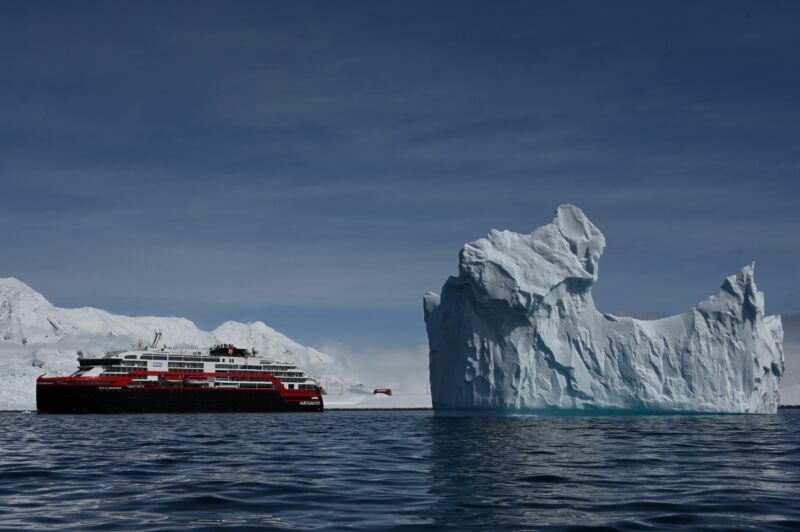

reader comments
262 with 121 posters participating
New study models ways of emerging from a pandemic lockdown
View more stories
At least 36 crew members and five passengers of the Norwegian cruise ship MS Roald Amundsen have tested positive for COVID-19.
Four of the infected crew members have been hospitalized and hundreds of passengers are in quarantine, awaiting test results.
MS Roald Amundsen is run by the Norwegian firm Hurtigruten, which in mid-June became the first cruise ship operator in the world to resume voyages amid the coronavirus pandemic. Hurtigruten assured travelers that it followed national public health guidelines and touted safety precautions for passengers on board, including social distancing, increased hygiene and sanitation protocols, and a vow to sail at no more than 50 percent capacity.
“At Hurtigruten, safety always has been, and always will be, our number one priority,” the company says on a COVID-19 safety page on its website. “With over 127 years of experience, we have established strict procedures for protection against infectious [sic] on board our ships.”
In the wake of the outbreak, the company has suspended all cruises. Norway’s government has also banned cruise ships carrying more than 100 people from disembarking passengers at its ports for 14 days.
The conclusion may seem foregone. The pandemic kicked off with multiple outbreaks on cruise ships, leaving some vessels desperately seeking ports that would accept them while isolating vacationing passengers in their tiny cabins. The most notable was the Diamond Princess, which docked in Yokohama, Japan on February 3 and held passengers and crew in quarantines for weeks. Of the 3,711 passengers and crew originally on board, 712 became infected with the coronavirus and 13 died.
Mistakes
The US Centers for Disease Control and Prevention notes that cruise ships are uniquely prone to infectious disease outbreaks because of the social nature of the ships and the fact that they bring travelers from many places together. The CDC has issued a “No Sail Order” for cruise ships that is set to last until September 30, unless it is rescinded or extended.
Still, Hurtigruten CEO Daniel Skjeldamsaid seemed to pin the outbreak onboard its ship to rule-breaking. “A preliminary evaluation shows a breakdown in several of our internal procedures,” Skjeldamsaid said in a statement to the BBC.
“This is a serious situation for everyone involved,” he went on. “We have not been good enough and we have made mistakes.”
Coronavirus cases onboard MS Roald Amundsen span two voyages, one that departed July 17 and another that departed July 24. There were 387 passengers total on the two legs, of which five have tested positive so far. Local authorities scrambled to track down passengers who had already disembarked, making sure that they went into quarantine and received testing.
Of the 158-person crew, 36 have tested positive. Thirty-two of the infected crew are from the Philippines, and the rest are from Norway, France, and Germany. Crew members were tested prior to leaving their countries but were not required to quarantine before coming aboard.
Norwegian police told Reuters they are looking into whether any laws were broken.


